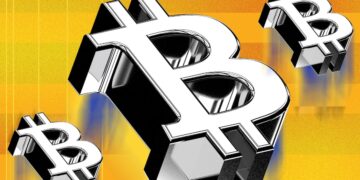The U.S. Dollar, the world’s reserve currency
and the ultimate safe-haven asset, is now the world’s worst-performing major
currency in 2025. Octa Broker explains why.
The historical role of the U.S. dollar as the
world’s leading safe-haven currency is under threat. Despite rising
macroeconomic uncertainty, investors are fleeing the U.S. dollar, defying
conventional safe-haven flows. Greenback’s rapid depreciation over the past
weeks has fuelled speculation over the loss of confidence in its safe-haven
status. With USDCHF trading news multi-year low, Octa Broker analyzes if we are
in the midst of dramatic regime change in markets and explains why the U.S.
dollar is struggling amid global trade turmoil
Introduction
The U.S. dollar (USD), the buck or the greenback,
as it is often informally referred to, has long occupied a rather exclusive
position in global finance. Ever since the end of World War II and the
establishment of the Bretton Woods monetary system, the greenback has played a
crucial role in facilitating cross-border transactions and smoothing
international trade flows, in addition to serving as a primary reserve currency
for central banks around the world. Being the official currency of the world’s
largest economy, the United States, has certainly helped the dollar maintain
its dominant position. Indeed, the sheer size of the U.S. economy, its deep and
liquid financial markets, strong private property rights and the rule of law
enshrined in the U.S. Constitution, and last but not least, the unrivalled
power of the U.S. military, made the dollar the most trusted global currency.
As a result, the greenback became what market participants call ‘a safe-haven
currency’, a refuge for investors during times of macroeconomic uncertainty or
market turmoil. Most recently, however, the instability in global financial
markets triggered by rising trade tariffs and exacerbated by fears of a global
recession seems to have upended this narrative, undermining the dollar’s established
role.
Trade
tensions
The U.S.
dollar has been depreciating almost relentlessly since mid-January. In just
three and a half months, the Dollar Index (DXY), which measures the value of
the greenback relative to a basket of six major foreign currencies, including
the euro, Japanese yen, British pound, Canadian dollar, Swedish krona, and
Swiss franc, lost more than 10% in value (from 13 January high to 21 April
low). On 11 April, it breached the critical 100.00 level, and although it has
since increased slightly, it remains by far the worst-performing currency among
other major currencies this year so far. This decline has raised an important
question: Is the U.S. dollar losing its safe-haven status, or is it merely a
temporary setback?
The
catalyst for the dollar’s slide is rooted in the escalating trade tensions,
particularly the aggressive tariff policies enacted by U.S. President Donald
Trump. In recent weeks, the U.S. imposed a 10% baseline tariff on all imports,
with much steeper duties imposed on key trading partners like China, which, in
turn, retaliated with its own 125% levies on U.S. goods. These moves have
stoked fears of a global recession, as international supply chains may get
disrupted with potentially devastating consequences for the world economy.
Historically, such uncertainty would bolster the dollar, as investors seek the
safety of U.S. assets. However, this time around, the greenback is faltering,
while alternative safe-haven currencies like the Swiss franc (CHF) and Japanese
yen (JPY) are gaining ground.
Hedging
Kar Yong
Ang, a financial market analyst at Octa Broker, says that the U.S. dollar’s
recent weakness is driven by a diversification shift among investors into
alternative safe-haven currencies, motivated by risk-hedging and fears over the
growth prospects of the U.S. economy.
‘We
are witnessing a major reallocation of capital. Market participants realise
that in a trade war, there are no winners. In the short term, the U.S. economy
will face the consequences, and they will not be pretty. Big players with large
investments in the U.S. realised they needed to hedge their currency risk, so
they moved into the Swiss franc and the Japanese yen. Also, higher tariffs are
fuelling recession fears, so traders have increased their bets on additional
rate cuts by the Fed [Federal Reserve].
That too had a bearish effect on the greenback’.
Indeed, on
April 21, USDCHF dropped below the 0.80500 mark, the level unseen in almost 14
years, while USDJPY was hovering near the critical 140.00 area, a drop below
which will open the way towards new multi-year lows. Significant shifts in
capital flow allocations have prompted some analysts to conclude that the U.S.
dollar is facing a crisis of confidence. However, Octa analysts have a
different view and believe that the current situation doesn’t reflect a broad
erosion of investors’ long-term trust in the U.S. dollar.
Kar Yong Ang said: ‘The issue isn’t so much a fundamental loss
of faith in the U.S. dollar’s long-term prospects. What we are witnessing right
now is a dramatic, yet logical response to the probable economic implications
of Donald Trump’s trade policies. You have an administration, which is
effectively re-structuring the global trade order, that does not conceal its
dissatisfaction with the Fed and apparently believes in a weak dollar. If
you’re a foreign investor in the U.S., you simply cannot afford to be unhedged
these days. But also, let’s not forget that the greenback has been falling from
relatively high levels, so a healthy downward correction was long overdue’.
In other words, the recent slide in the U.S. dollar is not an unusual
phenomenon or an anomaly; it is quite natural and probably a short-term
occurrence. In fact, even after an 11% drop in 2025, the greenback is still
some 38% above its historical low set in 2008. Furthermore, it is clear that
once key global actors adopt more conciliatory diplomatic rhetoric and engage
in active trade negotiations, the situation will normalise immediately.
Conclusion
As for the
dollar’s long-term prospects, its dominant status will likely continue to be
challenged, but no single currency can take its crown for now. According to the Bank of International
Settlements (BIS), the U.S. dollar still accounts for nearly 88% of
international transactions, and its dominance in Forex markets remains
unmatched, with daily trading volumes dwarfing those of the yen or franc.
According to the International Monetary Fund (IMF), more than half (57.8%) of
the $12.4 trillion in global foreign exchange reserves were in U.S. dollars.
Therefore, while the greenback may not be the automatic refuge it once was, its
role as a Forex cornerstone endures for now.
Compliance
reminder: trading Contracts for
Difference (CFDs) carries a high level of risk and may not be suitable for all
investors. Emotional trading can increase this risk. Always trade within your
means and understand the risks involved.
About Octa
Octa is an international broker that has
been providing online trading services worldwide since 2011. It offers
commission-free access to financial markets and various services used by
clients from 180 countries who have opened more than 52 million trading accounts.
To help its clients reach their investment goals, Octa offers free educational
webinars, articles, and analytical tools.
The company
is involved in a comprehensive network of charitable and humanitarian
initiatives, including the improvement of educational infrastructure and
short-notice relief projects supporting local communities.
Since its
foundation, Octa has won more than 100 awards, including the ‘Most Reliable
Broker Global 2024’ award from Global Forex Awards and the ‘Best Mobile Trading
Platform 2024’ award from Global Brand Magazine.















